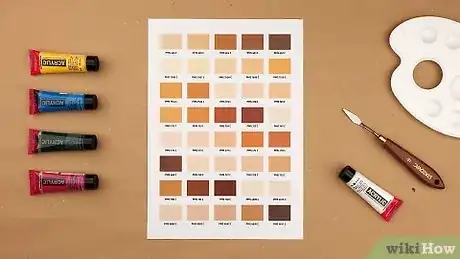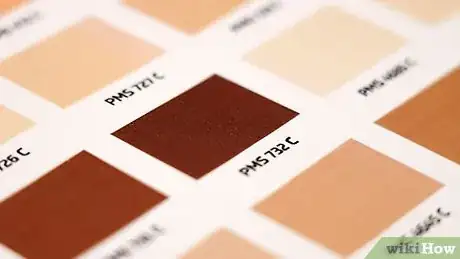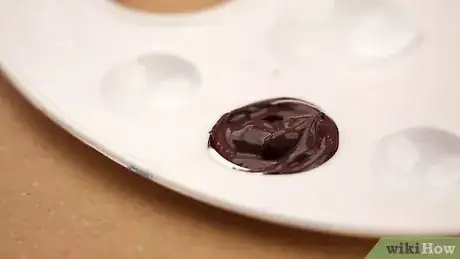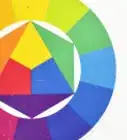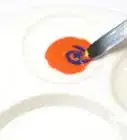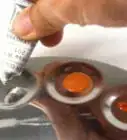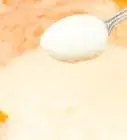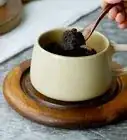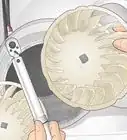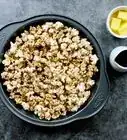wikiHow is a “wiki,” similar to Wikipedia, which means that many of our articles are co-written by multiple authors. To create this article, 93 people, some anonymous, worked to edit and improve it over time.
The wikiHow Video Team also followed the article's instructions and verified that they work.
This article has been viewed 3,239,865 times.
Learn more...
Brown. It's such plain word, but it covers a wide variety of colors—there are light browns, dark browns, warm browns, cool browns, reddish, greenish, and bluish browns. You learned in primary school that "red and green make brown," and while that's true, so do blue and orange, and many other color combinations! Muddying several colors together to get brown is pretty easy, but perfecting an exact shade of brown takes a little more finesse. Follow along after the jump to learn how to mix paint colors to make brown.
Steps
Mixing Brown Using a Color Wheel
-
1Mix the primary colors together. The first and most basic way to create brown is to mix all the primary colors together. That means you use a palette knife to blend blue, yellow, and red together until you reach the muddy color you desire. You don’t need to use equal amounts of each; add differing amounts of each color to slightly change the hue of your brown paint.[1]
-
2Mix complimentary colors together. When you look at a color wheel, the complimentary colors are the ones directly opposite one another on the wheel. The complementary colors are blue and orange, red and green, and yellow and purple. Mixing any of these pairs will create shades of brown that differ slightly from one another.[2]Advertisement
-
3Change the lightness or darkness of your brown paint. Add black or white to lighten or darken the paint. You can choose to add more of the darkest color you used to create the brown, but this will also slightly change the hue as well as darken it. If you want a very light brown, it will be easiest to take a lot of light paint and a small amount of the brown you have mixed. Adding dark to light is easier than adding light to dark.[3]
-
4Increase or decrease the saturation. To make your brown brighter, add more of the colors you originally mixed to create it. Making it more dull can be accomplished by adding a medium gray paint to the mixture.[4]
-
5Change the hue. If you created your shade of brown by mixing blue and orange, you can change the hue slightly by adding other colors. For example, to create a warmer brown, add red to the mixture. To create a dark, murky brown you could add purple or green. Keep in mind that the complementary pairs of color you start with can be altered by adding as many other colors as you would like. Add tertiary colors for a more subtle color change.[5]
Mixing Brown with a Pantone Guide
-
1Obtain a Pantone Formula Guide. While primarily used in the printing industry, Pantone provides a precise color reference to help you find exactly the brown you are looking for. You can purchase one new or used online.[6]
- It's important to be aware, though, that Pantone defines its colors in the CMYK color space, not RGY. CMYK is the acronym for Cyan, Magenta, Yellow, and Black. White is not included, as that is generally the color of the paper that is being printed on, so you will have to do some interpretation.
-
2Find the brown that you want. There are a large number of cards to flip through, so be patient. You can also take advantage of Photoshop or other graphics applications, which often include Pantone colors in various formats.
- Look for the exact percentages of magenta, yellow, cyan and black needed for that color, and mix accordingly. Note that in this example, the percentages are C:33%, M:51%, and Y:50%
- Note that magenta, yellow, and cyan are more accurate primary colors, but they are not the standard for mixing paints at this time. For more information, see this article.
-
3Mix your colors. Using the proportions provided on the Pantone guide, mix your your paints to create an exact shade of brown. Although this Pantone guide is typically used for mixing ink for prints, you can use magenta, cyan, black, and yellow paint to create the perfect hue of brown.[7]
Community Q&A
-
QuestionWhat color do I use to turn white into brown?
 Community AnswerTry a little bit of black depending on how dark you want it, green, and yellow. Keeping adding until you get a color you like.
Community AnswerTry a little bit of black depending on how dark you want it, green, and yellow. Keeping adding until you get a color you like. -
QuestionHow can you turn caramel into a darker brown?
 Community AnswerMix red and green separately to form a dark brown, then add it to the caramel color until you get the shade you want.
Community AnswerMix red and green separately to form a dark brown, then add it to the caramel color until you get the shade you want. -
QuestionWhat other colors can I make?
 Community AnswerDepends on what colors you have to begin with. Typically, red, yellow, and blue are the primary colors used to make all other colors, along with white for lightening and black for darkening. You can try experimenting with these basic colors to figure out what combinations of them result in what colors. Or you can always search up online how to make a specific color.
Community AnswerDepends on what colors you have to begin with. Typically, red, yellow, and blue are the primary colors used to make all other colors, along with white for lightening and black for darkening. You can try experimenting with these basic colors to figure out what combinations of them result in what colors. Or you can always search up online how to make a specific color.
References
- ↑ http://helloartsy.com/palette-knife/
- ↑ http://www.sensationalcolor.com/understanding-color/theory/color-relationships-primary-secondary-tertiary-hues-1842#.XB1leVxKjIU
- ↑ https://www.mybluprint.com/article/11-hacks-for-mixing-acrylic-paint-perfectly
- ↑ http://www.sensationalcolor.com/understanding-color/theory/color-relationships-primary-secondary-tertiary-hues-1842#.XB1leVxKjIU
- ↑ http://www.elizabethreoch.com/mixing-paint-colours-what-colours-make-brown/
- ↑ https://www.studica.com/blog/pantone-guide
- ↑ http://www.pantone.com/pages/products/product.aspx?pid=998&ca=1
About This Article
If you want to mix paint colors to make brown, mix all of the primary colors together, which are blue, yellow, and red. You can also mix 2 complementary colors together to make brown, like blue and orange, red and green, or yellow and purple. If you want your brown paint to be lighter, mix it with a little bit of white. If you want it to be darker, mix it with some black paint. To change the hue of your brown paint, add red to make it warmer, or purple and green to make it cooler. If you want to learn how to make your paint seem brighter or duller, keep reading!

